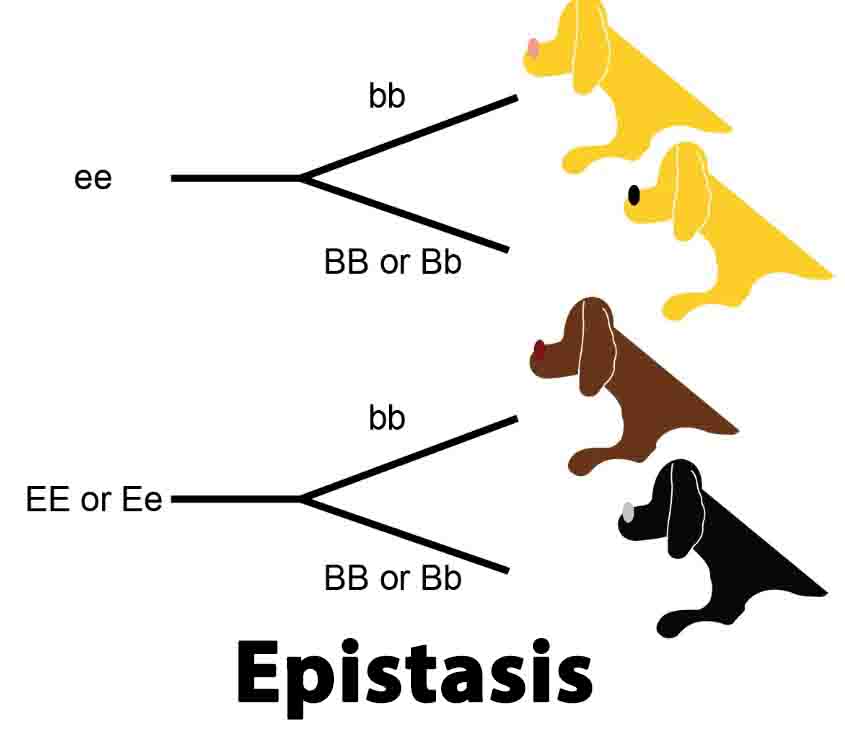Epistasis Definition
Epistasis is the interaction between genes that influences a phenotype. Genes can either mask each other so that one is considered “dominant” or they can combine to produce a new trait. It is the conditional relationship between two genes that can determine a single phenotype of some traits. At each locus are two alleles that dictate phenotypes.
They can affect one another in such a way that, regardless of the allele of one gene, it is recessive to one dominant allele of the other. An alternative expression to epistasis involves a ratio chart or table. With two genes there are four total alleles, meaning there are 16 pairs that can be made.
These 16 allele pairs translate to 16 phenotypes. However, not all the combinations are different due to dominant and recessive characteristics of the dominant and recessive alleles. With four alleles, a 4×4 chart can be used as a visual representation of the 16 different allele combinations.
Types of Epistasis
There are six common types of epistasis gene interactions: dominant, dominant inhibitory, duplicate dominant, duplicate recessive, polymeric gene interaction, and recessive. When a dominant allele masks the expression of both dominant and recessive alleles at another locus, it is referred to as dominant epistasis or simple epistasis.
When it is a recessive allele that masks the expression, it is called recessive epistasis. Some genes can also mask other genes by suppression. This is referred to as dominant inhibitory or suppression epistasis because the gene is acting as a suppressor, or a factor that prevents the expression of another allele.
Duplicate types of epistasis depend on two loci. When there is a dominant allele masking the expression of recessive alleles at two loci, this is known as duplicate dominant epistasis or duplicate gene action.
When there is a recessive allele masking the expression of dominant alleles at two loci, this is known as duplicate recessive epistasis. It is also known as complementary gene action because both genes are required in order for the correct phenotype to be present.
Polymeric gene interaction is the combination of two dominant alleles that intensifies the phenotype or creates a median variation. Alone, each dominant allele produces a physical trait different from the combined dominant alleles.
Therefore, this creates three phenotypes for only two dominant alleles. This shows that neither dominant allele is prevailing over the other dominant allele.
Examples of Epistasis
The plant Primula produces a chemical called malvidin. Synthesis of the chemical is influenced by the K gene, while suppression of synthesis is controlled by the D gene. Both are considered to be dominant traits. If a dominant D allele is present, there will be no expression regardless of whether there is a dominant K allele present.
This interaction between alleles is then classified as dominant inhibitory epistasis, since the dominant D allele is inhibiting the K allele.
Summer squash can have three different colors: white, yellow, and green. The white color is determined by the dominant gene W, yellow by the dominant gene G, and green by the recessive genes w and g.
The white color is dominant over yellow and green. Since the white is dominant, it is called epistatic to the dominant and recessive G/g alleles. This interaction is then classified as simple or dominant epistasis.
Related Terms
- Gene – DNA that acts as “instructions” to encode for proteins.
- Locus (plural loci) – The location of a gene on a chromosome.
- Allele – A pair of genes that are present at a locus that control a characteristic.

